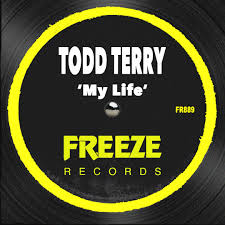Afrobeat music, a dynamic genre with its roots in West Africa, has captivated audiences around the world with its infectious rhythms, vibrant melodies, and powerful messages. Developed in the 1960s by Nigerian musician Fela Kuti, Afrobeat blends highlife, jazz, funk, and traditional African music elements. This article explores the key elements of Afrobeat, its evolution and contemporary artists, global impact, dance, and culture, as well as its promising future.
Key Elements of Afrobeat
Rhythm and Percussion
Afrobeat is defined by its irresistibly groovy rhythms and intricate percussion. The polyrhythmic patterns created by multiple drummers lay the foundation for the music, infusing it with an energetic pulse that makes it impossible to resist moving.
Horn Section
The soulful sounds of the horn section, comprising trumpets, saxophones, and trombones, are an essential element of Afrobeat music. These instruments bring a vibrant and integral contribution to the Afrobeat sound, adding depth and richness to the musical experience.
Call-and-Response Vocals and Energetic Choruses
Afrobeat often incorporates call-and-response vocals, where a lead singer or a group of singers interacts with the audience or a chorus. This participatory aspect creates a lively and engaging atmosphere, encouraging listeners to join and become part of the musical experience.
Instrumentation
The genre embraces various instrumental talents, including guitars, keyboards, and bass, harmoniously blending to create a captivating, multidimensional sound that defines Afrobeat’s unique essence. These instruments contribute to the complexity and depth of the music, adding layers of melody and harmony that complement the rhythmic foundation.
Afrobeat’s Evolution and Contemporary Artists
Influence on Modern Music Genres
Afrobeat’s influence extends beyond its genre, shaping and inspiring other contemporary music styles. The rise of Afrobeat and Afro-pop stands as a testament to the enduring impact of Afrobeat on contemporary music. These genres masterfully blend Afrobeat with elements of pop, dancehall, and hip-hop, showcasing the genre’s remarkable ability to adapt and maintain relevance within the ever-changing modern music scene.
The Emergence of New Afrobeat Artists
Recently, a wave of talented Afrobeat artists has emerged, injecting the genre with fresh perspectives and innovative sounds. These artists push boundaries, infuse Afrobeat with their unique creativity, and pave the way for exciting new directions within the genre. A few individuals stand out strongly among the best Afrobeat performers who have become significant personalities in the genre. Afrobeat’s founder and father, Fela Kuti, established the genre’s basis with his avant-garde sound and socially concerned lyrics, forever influencing it.
Contemporary musicians like Burna Boy, Wizkid, and Davido have elevated Afrobeat by building on Fela’s legacy. Burna Boy has achieved international popularity thanks to his alluring vocals, energetic stage presence, and thought-provoking lyrics. He has received widespread recognition and multiple awards in the process. Wizkid and Davido, who are from Nigeria, have enjoyed enormous success because of their contagious energy and songs that captivate listeners worldwide. Among many others, these musicians continue to push the frontiers of Afrobeat, elevating it to a dominant force in world music and securing their status as leading Afrobeat musicians.
Afrobeat’s Fusion with Other Genres
Afrobeat continues to evolve through collaborations with artists from various genres. Afrobeat continually pushes the boundaries of its sound, embracing cross-genre experimentation with hip-hop, reggae, and electronic music. Collaborations with international musicians further fuel its evolution, allowing Afrobeat to expand its reach and constantly reinvent itself with each musical endeavor.
The Global Impact of Afrobeat
Afrobeat’s Popularity and Recognition
Afrobeat has transcended geographical boundaries and garnered widespread popularity. The captivating fusion of African and Western influences in Afrobeat has enraptured listeners worldwide, resulting in sold-out performances, devoted fan communities, and a growing reputation within the global music industry.
Collaborations and Cross-Cultural Exchanges
Afrobeat artists have collaborated with renowned musicians worldwide, fostering cross-cultural exchanges and pushing boundaries. These collaborations have elevated Afrobeat’s global profile, helped bridge gaps between musical traditions, and promoted cultural understanding.
Afrobeat Festivals and Events
The growing popularity of Afrobeat has resulted in the establishment of dedicated festivals and events celebrating the genre. These events offer valuable opportunities for both seasoned and up-and-coming Afrobeat artists to showcase their immense talent. Moreover, they serve as vibrant cultural hubs where enthusiasts can immerse themselves in the pulsating atmosphere of Afrobeat music and dance, fostering a sense of community and celebration.
Afrobeat Dance and Culture
The Role of Dance in Afrobeat Music
Dance is an integral part of Afrobeat, with its infectious rhythms inspiring unique and energetic dance styles. Afrobeat dances, such as the Azonto, Alanta, and Shoki, reflect the cultural diversity of African traditions and contribute to the vibrant and joyous nature of the music.
Popular Afrobeat Dance Styles
Afrobeat dances often feature intricate footwork, body movements, and synchronized choreography. These styles vary across regions and communities, showcasing the diversity and creativity within Afrobeat dance culture.
Fashion and Visual Aesthetics
Afrobeat culture is not limited to music and dance alone. It encompasses a vibrant visual aesthetic that incorporates bold and colorful fashion choices, expressive hairstyles, and cultural symbols. These elements play an essential role in the overall Afrobeat experience, reflecting the pride and identity of the community.
The Future of Afrobeat
Afrobeat’s Continued Global Influence
With its ever-growing global popularity, Afrobeat’s influence on the music industry remains steadfast and unwavering, demonstrating no signs of diminishing anytime soon. The genre’s fusion with other styles and ability to adapt to new trends ensure its longevity and relevance in the ever-evolving music landscape.
Emerging Trends and Innovations
New trends and innovations within Afrobeat, such as the incorporation of electronic elements and experimentation with different musical styles, contribute to the genre’s evolution. These advancements attract a wider audience and propel Afrobeat forward, ensuring its continued growth and expansion.
Technology and Digital Platforms
Technology and digital platforms have been crucial in promoting Afrobeat to a global audience. Streaming services, social media, and online communities provide platforms for Afrobeat artists to reach fans worldwide, breaking down barriers and facilitating cultural exchange on an unprecedented scale.
Conclusion
Afrobeat music, with its vibrant rhythms, powerful messages, and infectious energy, has impacted the world stage. From its key elements of rhythm and percussion to its fusion with other genres, Afrobeat’s evolution and contemporary artists, global impact, dance and culture, and promising future, the genre continues to inspire and unite people from diverse backgrounds. As Afrobeat maintains its momentum and influences new generations of musicians, its legacy as a musical force of empowerment and celebration remains strong.





















 🔥 Limited Time: Get 55% OFF All Plans - Ends in:
🔥 Limited Time: Get 55% OFF All Plans - Ends in: